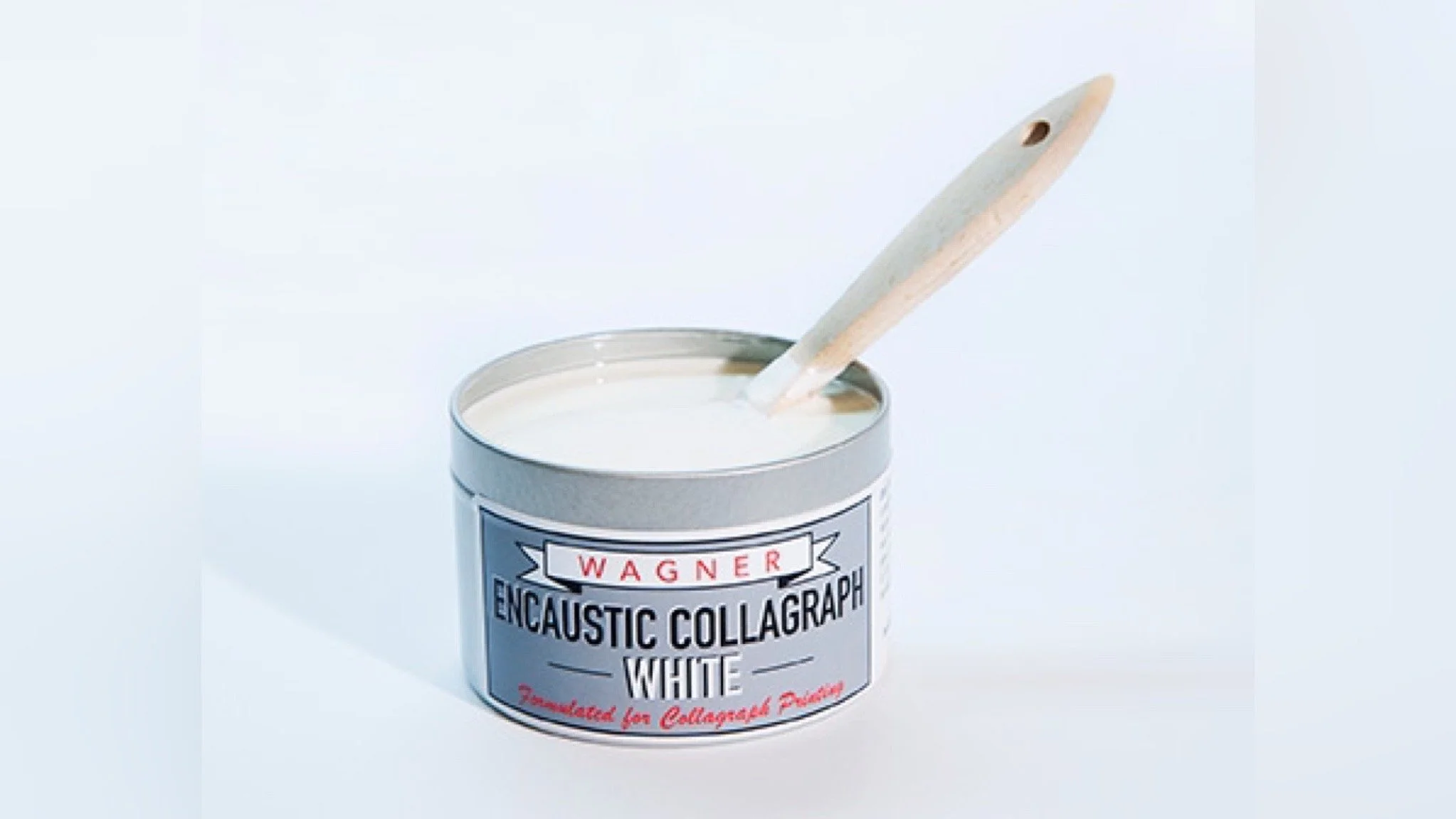How to Make Collagraph Prints Using Wagner Encaustic Collagraph Wax
DIRECTIONS FOR USE: Heat on hotplate 200° maximum until molten, can take up to one hour. Apply with a hog hair or other natural hair paint brushes. It is recommended you use a electric pancake griddle, preferably new for melting the wax. Place can lid loosely on for faster melting.
SAFETY FIRST: Use a heat glove or 4" spring clamp to move the can of wax on and off of the hotplate. Use in a properly ventilated area and newer heated tools and hotplate.
USE THIS PRODUCT ON 1/8" thick or greater beveled Plexiglas acrylic printing plates for creating Encaustic Collagraphs. You can also use WAGNER ENCAUSTIC COLLAGRAPH WHITE on cardboard or rigid masonite, paintboard or thin veneer plywood.
BEST RESULTS if used to create encaustic collagraphs to be printed on WET printing paper using Akua Intaglio Inks on an etching press. You can also use R&F Pigment Sticks. Recommended papers: Rives BFK, Fabbriano, Stonhenge, Kitakatta, Sakomoto and a variety of other Japanese papers, 180-280lb.
BEGIN WITH LIGHT PRESSURE - All etching presses vary.
BREAK THE RULES OF ENCAUSTIC! Fusing the wax is optional and not recommended with a heat gun or blow torch. Using a tacking iron to fuse has the added bonus of adding texture to the wax. Layering the wax or covering the whole plate is not necessary to allow for negative spaces, textures and shapes to print.
GO THIN TO WIN! For best results, use only a thin textured layer of Wagner Encaustic Collagraph White.
LESS IS MORE! Like a good eye cream, a little of this product goes a long way. Wax that is scraped off and uncontaminated by ink can be recycled right back into the can.
IF YOUR PAPER STICKS TO THE PLATE:
Be sure to soak or wet both sides of the paper.
Use a piece of 1" foam in between or in place of your blankets.
Ease off the press pressure, all presses varey, always start with light pressure.
Scrape down some of the higher levels of your built up wax texture.
Do not use release agent directly on your collagraph.
Do not clean the plate with Windex, Simple Green or anything other than watered down Dawn Liquid or Akua Clean Up.
DO NOT use oil based inks on your encaustic collagraphs. Oil based inks are stiffer and made with boiled plate oil which make the wax collagraph plate stick to the paper.
DO NOT fuse the wax on the Plexiglas plate using a heat gun or blow torch, this will cause the plate to warp and and plexi to off-gas. Tacking iron is recommended for light fusing.
DO NOT use the following Akua mediums on encaustic collagraphs: Retarder, Extender, Release Medium, Tack Thickener or Mag mix.
DO NOT use any cleaners on your collagraph such as Windex or Simple Green to clean your collagraph plate, this softens the wax and makes it stick to the paper.
CLEAN UP FOR PLATES AND AKUA INK is easy, dissolve 1 part Dawn Liquid and 2 parts water in a squeeze bottle. When cleaning the excess ink off of your encaustic collagraph plate, use COLD water with the Dawn Liquid. A nylon soft bristle hand brush is a safe and non-damaging tool for scrubbing ink from the collagraph surface. You can also use Dawn to clean brushes, ink knives, pallettes and all other surfaces.
Specially formulated by Elise Wagner, Wagner Encaustic Collagraph Wax is hand-poured in small batches and is the perfect next exploration for printmakers or encaustic painters. Endless possibilities for making collagraph prints! Take a Workshop with Elise.



